Ferns are different in important ways from flowering plants, and that can sometimes make it tricky to know what to expect of them throughout the growing year. One common question is whether it is normal for ferns to die back in the winter, or whether this is a sign that they are suffering cold damage.
Deciduous ferns will naturally turn brown and die back in fall and winter. However, there are many evergreen varieties of ferns that will last through the year, and some semi-evergreen varieties that have only short interruptions to their growth period. It is possible that even evergreen ferns can die back under the worst weather conditions, but there are steps that can be taken to protect them.
There are many varieties of deciduous ferns that will lose their fronds in the fall, just as deciduous trees and flowers will lose their leaves. However, all ferns are perennials that will survive through winter and send up new fiddlesticks from the rhizomes in the soil come the spring – unlike annual flowering plants that must go to seed and germinate anew each year.
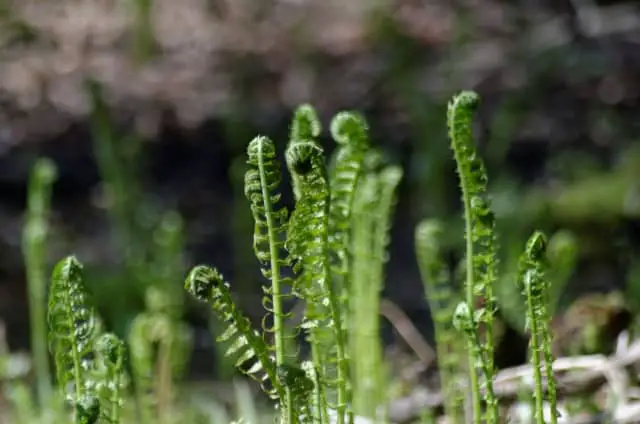
Whether a fern is deciduous or evergreen does not always relate to how cold-tolerant the species is, and so it is possible for ferns to die back due to cold damage rather than a natural seasonal decline in the fall. Native ferns should be well adapted to your local climate, but for other ferns it is important to check how cold hardy the species is before keeping it outside over winter.
There are numerous ornamental ferns that are deciduous, semi-evergreen or evergreen. We have a complete list of ferns available for reference, but here are some of the more popular varieties for each category:
Popular deciduous ferns
Perhaps predictably, some of the most delicate ferns are deciduous. The Lady fern and Japanese painted ferns (and cultivars) will lose their elegant fronds in the fall and winter, remaining dormant through the cold season.
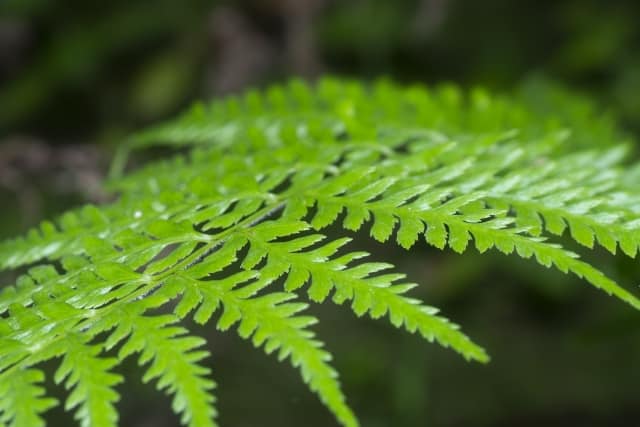
Lady fern
- Athyrium filix-femina
- Deciduous
- Prefers partial or full shade
- Height: up to 1 m
- Soil: acid or neutral. Moist, poor drainage tolerated.
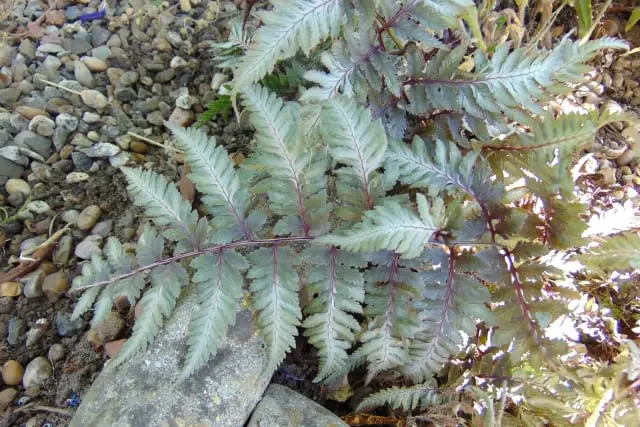
Japanese painted fern
- Athyrium niponicum
- Deciduous
- Prefers partial shade
- Height: up to 0.5 m
- Soil: acid, neutral or alkaline. Moist, well-drained.
The striking and bushy ostrich fern (sometimes called shuttlecock fern) is also deciduous, losing its spectacular fan of foliage over the winter, before reappearing in the spring.
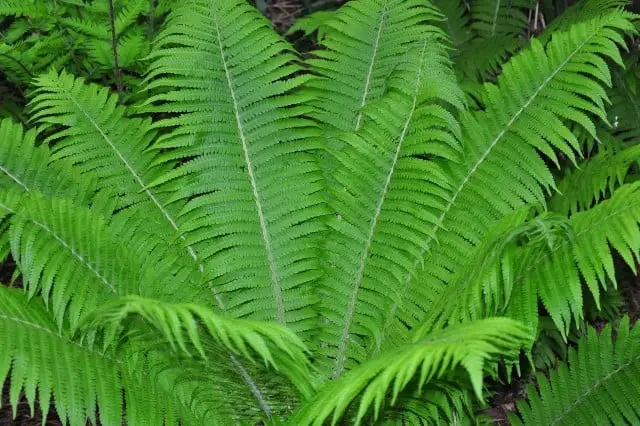
Ostrich fern
- Matteuccia struthiopteris
- Deciduous
- Full or partial shade
- Height: up to 1.5 m
- Soil: acid or neutral. Moist, well-drained.
Cinnamon fern is another deciduous variety. Both the sterile and fertile fronds will die back over winter, but return in spring.

Cinnamon fern
- Osmunda cinnamomea
- Deciduous
- Prefers partial shade
- Height: up to 1.5 m
- Soil: acid. Moist, poor drainage tolerated.
Finally, although less prized as a special variety, the common and classic Male fern is also deciduous.
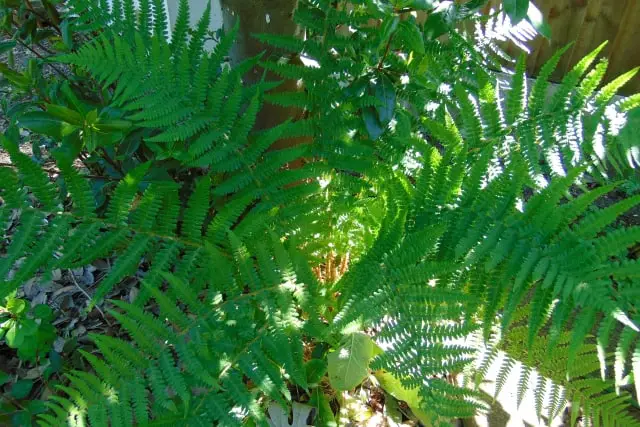
Male fern
- Dryopteris filix-mas
- Deciduous
- Prefers partial or full shade
- Height: up to 1.5 m
- Soil: acid, neutral or alkaline. Moist, poor drainage tolerated.
For all these deciduous varieties, there is no need for concern when the fronds turn brown and die back. It is the normal seasonal cycle for these plants.
Popular semi-evergreen ferns
The second category are semi-evergreen ferns, which sounds a bit as though the growers are hedging their bets between deciduous or evergreen, but it does have a defined meaning.
Ferns can be semi-evergreen if they lose their fronds late in the winter for a short period, before rapidly rejuvenating and sending up new growth. Alternatively, some semi-evergreen ferns can be evergreen in milder climates – retaining their foliage throughout the relatively mild winter – but lose their foliage in colder climates where the winters are more harsh.
Here are some of the most popular garden ferns that fall in the semi-evergreen category:
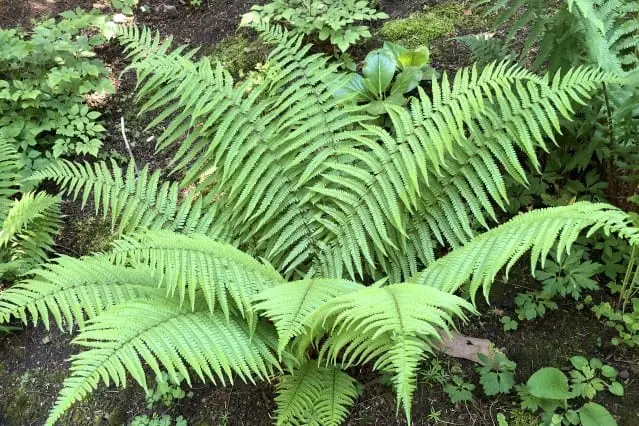
King fern
- Dryopteris affinis
- Semi-evergreen
- Shade, partial or full sun
- Height: up to 1.5 m
- Soil: acid, neutral or alkaline. Moist, well-drained.
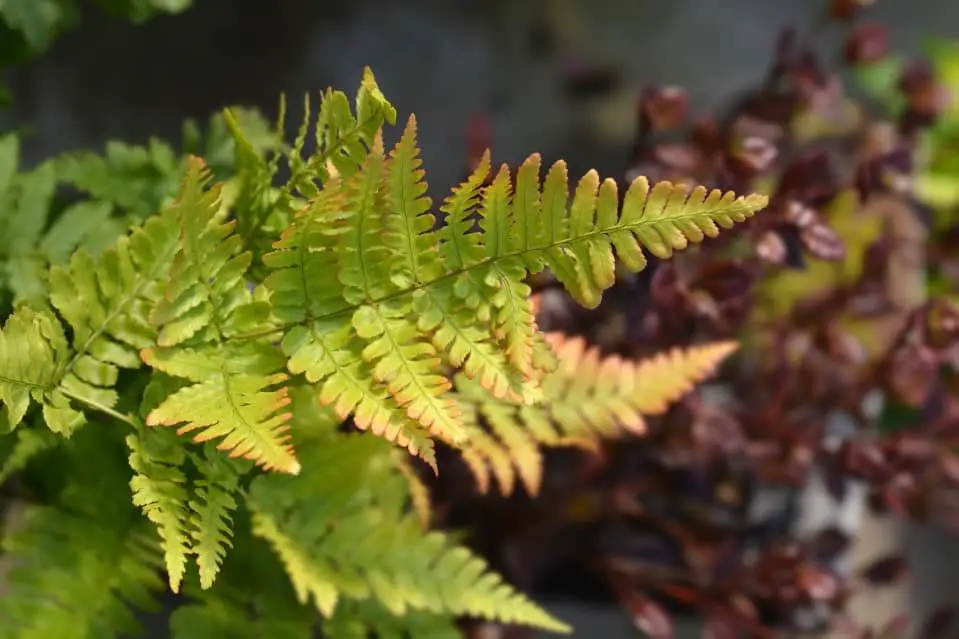
Autumn fern
- Dryopteris erythrosora
- Semi-evergreen
- Full or partial shade, and full sun
- Height: up to 1 m
- Soil: tolerant of most pH and drainage conditions.
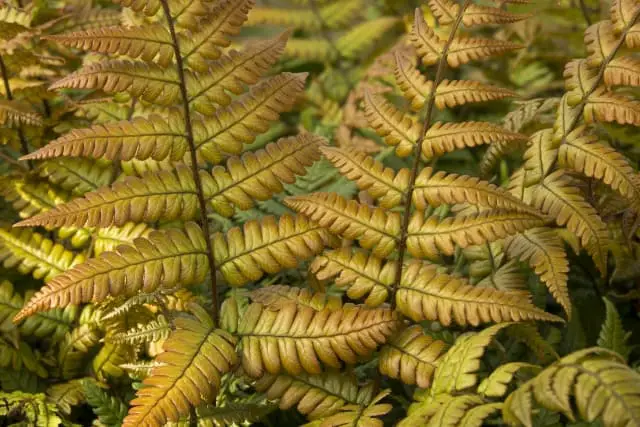
Sunset fern
- Dryopteris lepidopoda
- Semi-evergreen
- Full or partial shade
- Height: up to 1 m
- Soil: acid or neutral. Moist, well-drained.
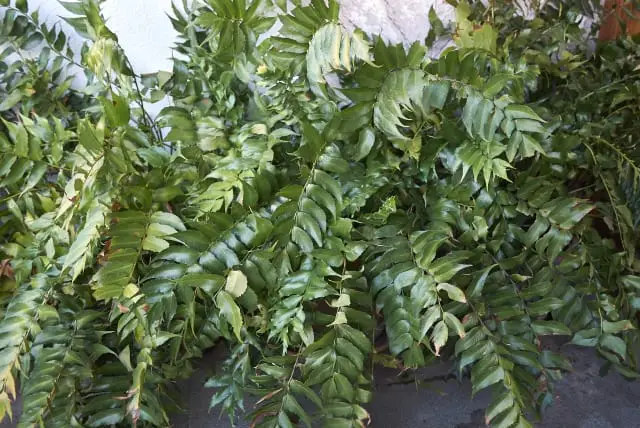
Holly fern
- Cyrtomium falcatum
- Evergreen or semi-evergreen
- Full or partial shade
- Height: up to 1 m
- Soil: acid, neutral or alkaline. Moist, well-drained.
Popular evergreen ferns
Finally, many fern species are evergreen and keep their foliage throughout the year. This doesn’t mean that old fronds don’t occasionally die back, but it does mean that there are always new green fronds pushing through to replace them. Evergreen ferns make excellent house plants, but also provide reliable interest in the garden in winter.
Boston ferns are a highly prized indoor plant, with a vigorous cascade of bushy fronds.
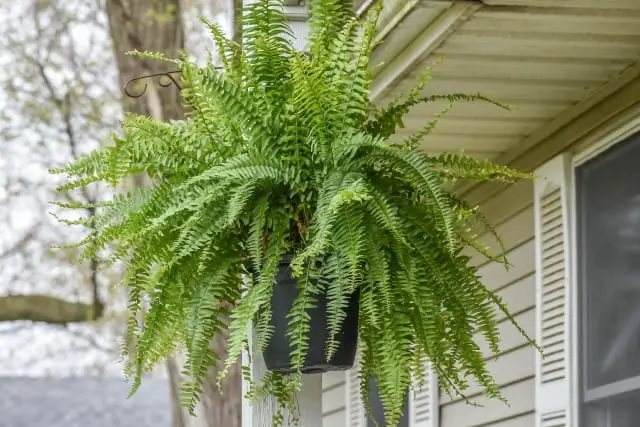
Boston fern
- Nephrolepis exaltata
- Evergreen
- Partial shade
- Height: up to 1 m
- Soil: acid or neutral. Moist, well-drained.
They are evergreen, but are cold-sensitive and so should not be left outside over winter in colder regions.
Similarly, Maidenhair ferns are also very popular indoor plants, with their elegant foliage that lasts throughout the year.
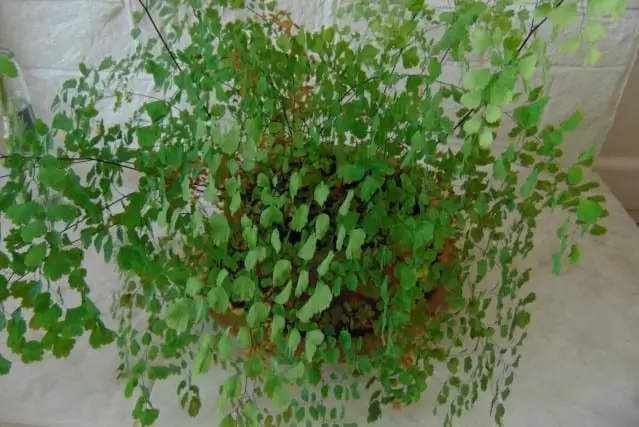
Maidenhair fern
- Adiantum raddianum
- Evergreen
- Partial shade
- Height: up to 0.5 m
- Soil: neutral or alkaline. Moist, well-drained.
In the garden, Hart’s tongue fern has a striking, glossy crown of unsegmented fronds that remain deep green through all seasons.
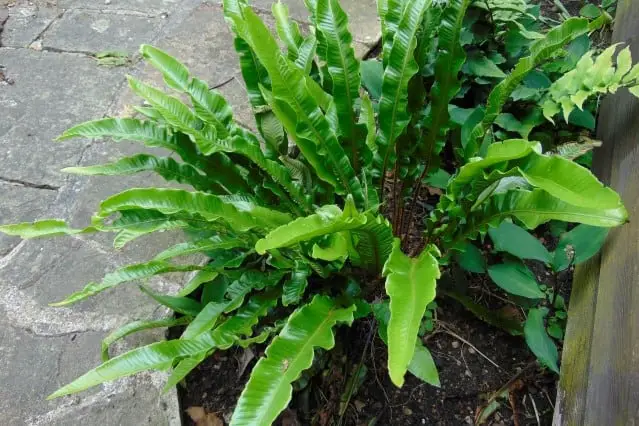
Hart’s tongue fern
- Asplenium scolopendrium
- Evergreen
- Prefers partial or full shade
- Height: up to 0.5 m
- Soil: alkaline or neutral. Moist, well drained.
Christmas fern is famed for it’s evergreen foliage, and its fronds have long been used for Christmas decorations – or simply admired and appreciated for its resilience through the winter period. Some varieties of Christmas fern can be semi-evergreen in colder climates, but most are hardy and evergreen.
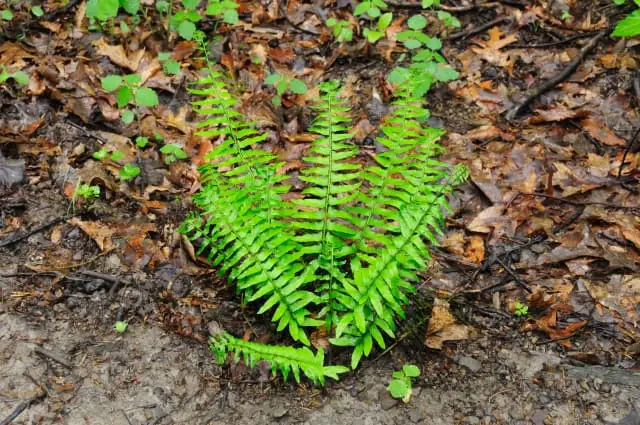
Christmas fern
- Polystichum acrostichoides
- Evergreen
- Partial shade
- Height: up to 1 m
- Soil: acid, neutral or alkaline. Moist, well-drained.
Finally, the curious Staghorn fern is also evergreen, but as it originates from tropical climates it is advisable to bring specimens into the house (or at least, shelter) during the depths of winter, as it can be prone to frost damage.
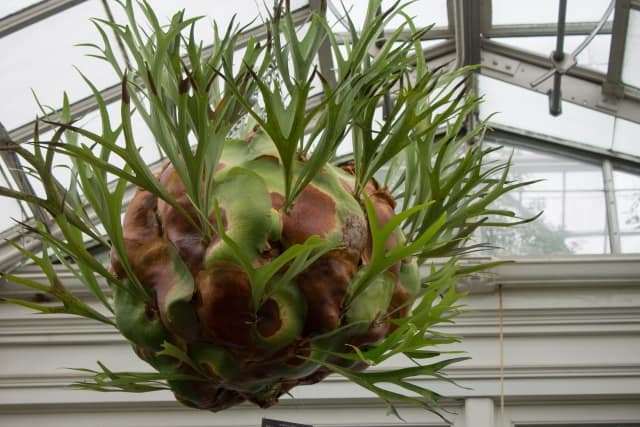
Staghorn fern
- Platycerium bifurcatum
- Evergreen
- Prefers partial shade
- Height: up to 1 m
- Epiphytic (but can be grown on loam). Keep moist, well-drained.
How to protect against cold damage
For all varieties of fern, there is always the risk that a sudden cold snap, or particularly bitter winter, can lead to cold damage that kills off fronds, regardless of whether or not the fern is deciduous or evergreen.
Cold damage can often be recognized as fronds turning black, at which point they should be cut back and removed. If this happens to your ferns, it is a good warning that more protection may be needed to ensure that the plant survives until new growth can restore it to former glory.
Cold-sensitive potted or hanging ferns should be brought into shelter over the winter in a garage, shed or house, after cutting back any dead fronds. If you are taking them into the house, it is worth giving them a quick rinse to remove bugs and beetles or any other unwanted house guests.
For outdoor ferns, cold damage to the crown can happen if water pools around the base of the fronds and then freezes. This sort of cold damage to the rhizome or root will be more serious that merely losing fronds – which can be regrown – and risks the survival of the plant.
To guard against this danger, it is worth taking some steps to protect the crown before the worst of the winter cold arrives. First, cut away any brown or damaged fronds to reduce the risk of these becoming waterlogged or rotting. Then, pack the crown with dead leaves or straw. This will help prevent water pooling around the base of the fern, and also provide some insulation against the cold.
With these precautions, cold hardy ferns should be well protected against the worst of the winter.
Deciduous ferns do die back every winter, but will return in the spring, just like any other perennial plant. Evergreen varieties will remain rich with foliage all year round. With appropriate precautions to cope with severe cold, ferns can be relied upon to last for many years.
